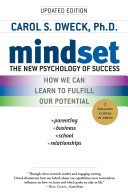

Carol S. Dweck introduces the concept of the 'fixed mindset' and the 'growth mindset.' The fixed mindset is characterized by the belief that abilities and intelligence are static traits that cannot be changed. Those with a fixed mindset may avoid challenges, give up easily, and feel threatened by the success of others. In contrast, individuals with a growth mindset believe that their abilities can be developed through dedication and hard work. This perspective fosters resilience, encourages taking on challenges, and promotes a love for learning. Dweck illustrates how these mindsets can influence various aspects of life, including education, relationships, and business. Understanding these two mindsets is crucial for personal development and achieving success, as it shapes how individuals respond to setbacks and embrace opportunities.
Continue readingA key theme in the book is the phrase 'not yet' as a powerful tool for fostering a growth mindset. Instead of viewing failure as an endpoint, Dweck encourages readers to adopt the perspective that they are on a journey of learning. By adding 'yet' to their self-talk, individuals can reframe their challenges and setbacks. For example, if a student struggles with a math problem, saying 'I can't do this yet' shifts the focus from a fixed inability to a belief in future growth and success. This simple linguistic change can significantly impact motivation and perseverance, leading to greater achievement over time. The concept of 'the power of yet' is particularly relevant in educational settings, where it can help students develop resilience and a lifelong love for learning.
Continue readingDweck emphasizes the importance of embracing challenges as a fundamental aspect of developing a growth mindset. Rather than avoiding difficult tasks, individuals should view them as opportunities for growth. Challenges push people out of their comfort zones, enabling them to learn new skills and improve existing ones. Dweck provides examples from various fields, such as sports and business, where embracing challenges has led to remarkable achievements. Furthermore, the book discusses how a growth mindset encourages individuals to persist in the face of adversity, viewing obstacles as stepping stones rather than roadblocks. This attitude not only enhances personal development but also fosters innovation and creativity, as individuals are more likely to experiment and take risks when they believe in their ability to grow.
Continue readingFeedback plays a crucial role in the development of a growth mindset. Dweck discusses how individuals with a growth mindset view feedback as a valuable tool for improvement rather than criticism. They seek constructive feedback to understand their strengths and weaknesses, which informs their learning strategies. In contrast, those with a fixed mindset may perceive feedback as a threat to their self-worth and avoid it altogether. The book provides practical strategies for giving and receiving feedback effectively, highlighting the importance of focusing on effort and strategies rather than innate talent. By fostering a culture of constructive feedback, individuals and organizations can create an environment that encourages growth and continuous improvement.
Continue readingDweck explores the impact of different types of praise on mindset development. Praising children for their intelligence can inadvertently reinforce a fixed mindset, leading them to avoid challenges for fear of failure. Instead, Dweck advocates for praising effort, strategies, and resilience, which encourages a growth mindset. This approach helps individuals understand that success is a result of hard work and perseverance rather than a fixed trait. The book provides insights into how educators and parents can cultivate a growth mindset in children through mindful praise and encouragement. By shifting the focus from inherent ability to effort and learning, individuals are more likely to embrace challenges and develop a love for learning.
Continue readingThe book also delves into how mindsets affect relationships. Individuals with a growth mindset are more likely to approach relationships with openness and a willingness to learn and adapt. They view conflicts as opportunities for growth and understanding, while those with a fixed mindset may struggle to navigate challenges in relationships. Dweck emphasizes the importance of communication, empathy, and a willingness to change as key components of healthy relationships. By fostering a growth mindset in interpersonal dynamics, individuals can build stronger connections and navigate conflicts more effectively. This idea extends to various types of relationships, including friendships, romantic partnerships, and professional collaborations.
Continue readingDweck provides numerous examples of how the principles of growth and fixed mindsets can be applied in educational and business contexts. In education, fostering a growth mindset can lead to improved student performance and engagement. Teachers who encourage a growth mindset create a classroom environment where students feel safe to take risks and learn from their mistakes. In the business world, organizations that embrace a growth mindset are more innovative and adaptable. Dweck discusses case studies of companies that have successfully implemented growth mindset principles, leading to increased employee satisfaction and productivity. This section of the book serves as a practical guide for educators and leaders looking to cultivate a culture of growth and resilience within their organizations.
Continue reading